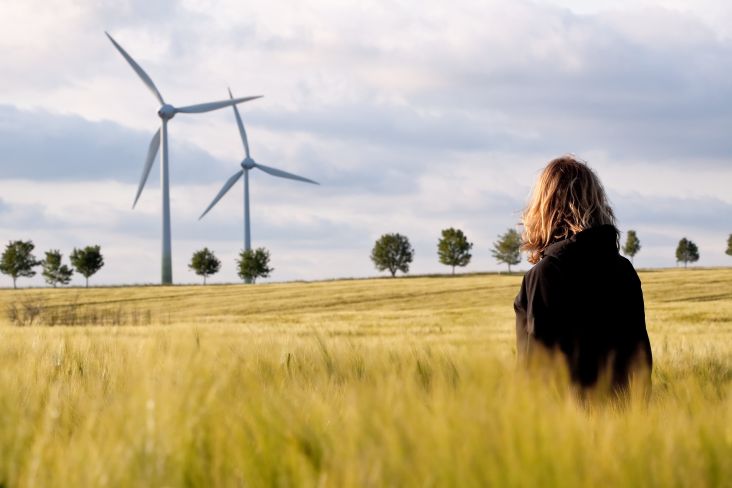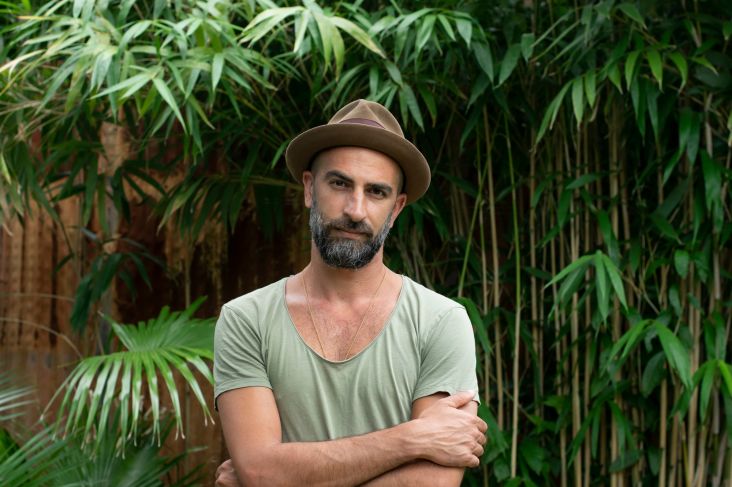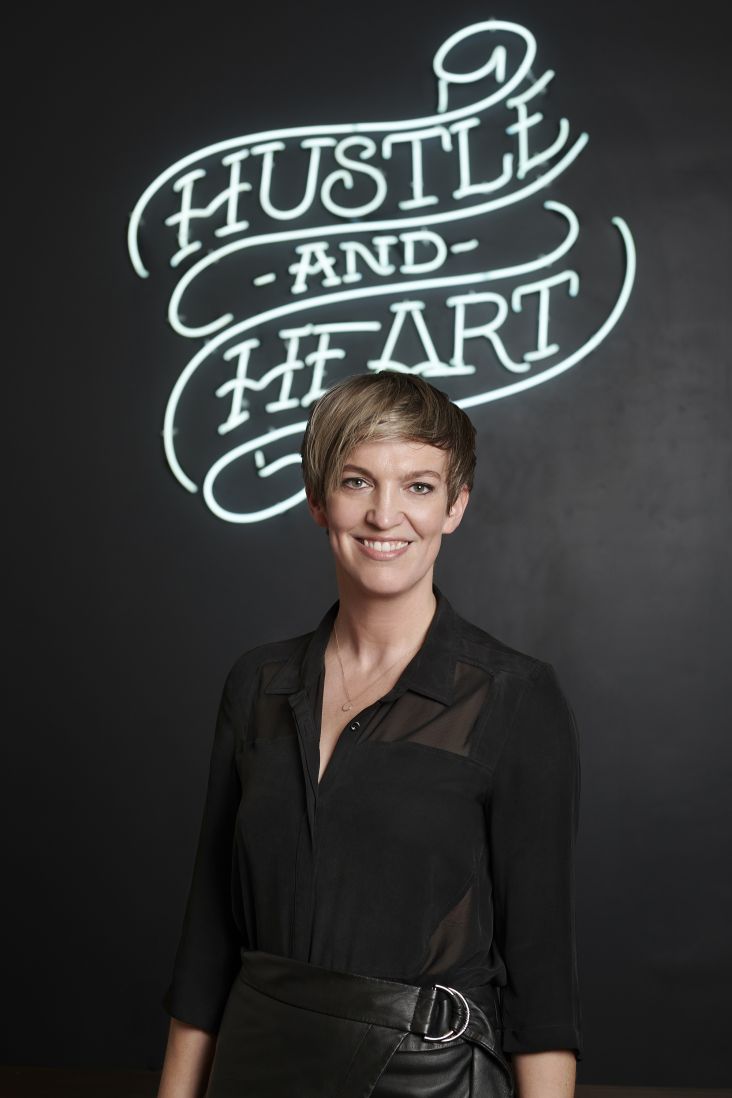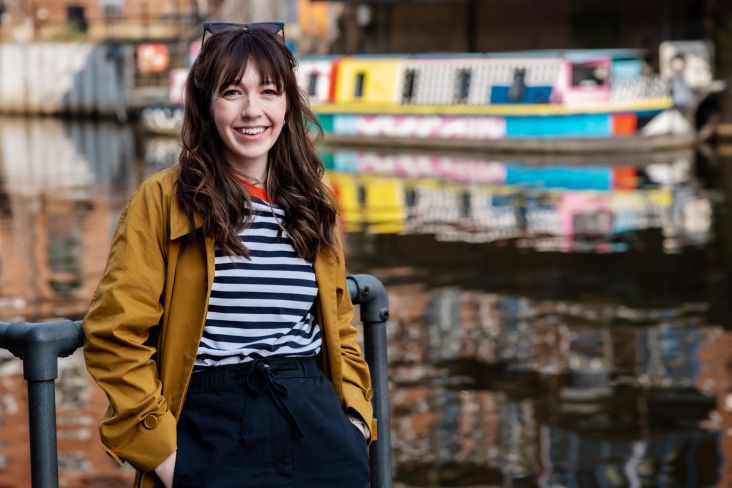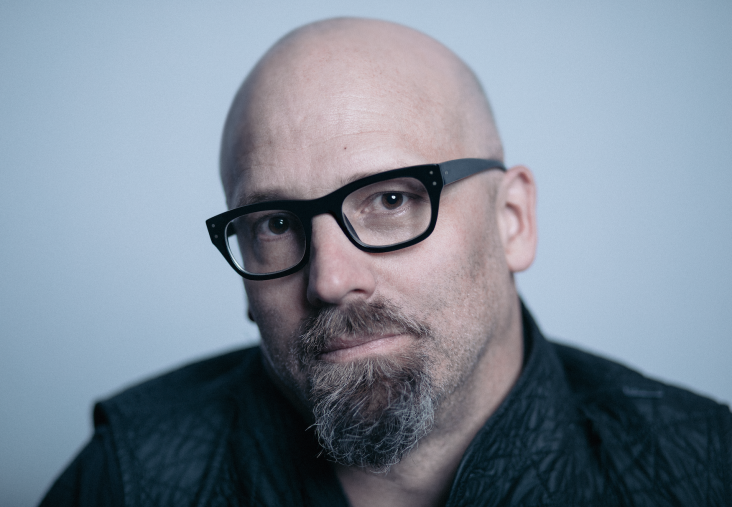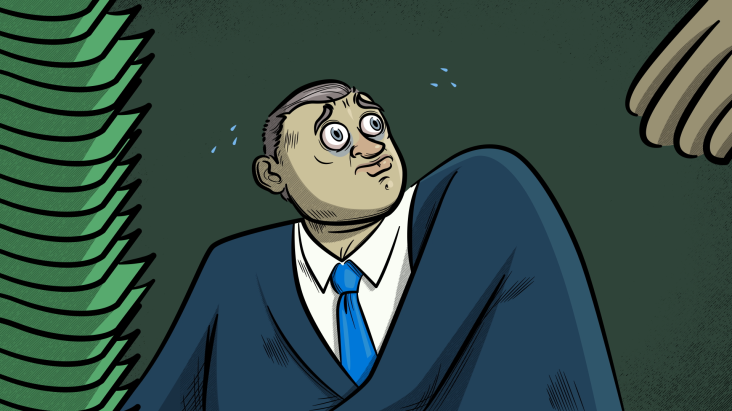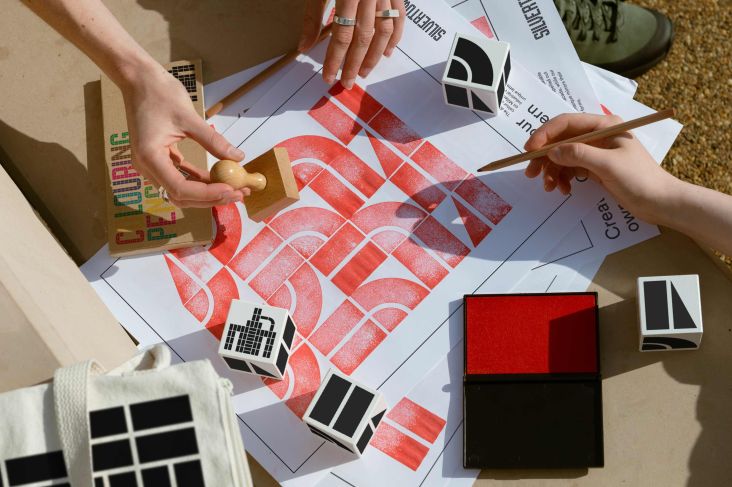Grime photographer Simon Wheatley on how to capture street scenes in just 24 hours
Best known for chronicling the grime scene, London photographer Simon Wheatley recently spent 24 hours shooting across the capital. He walks us through what happened and shares some key lessons he learned about street photography along the way.
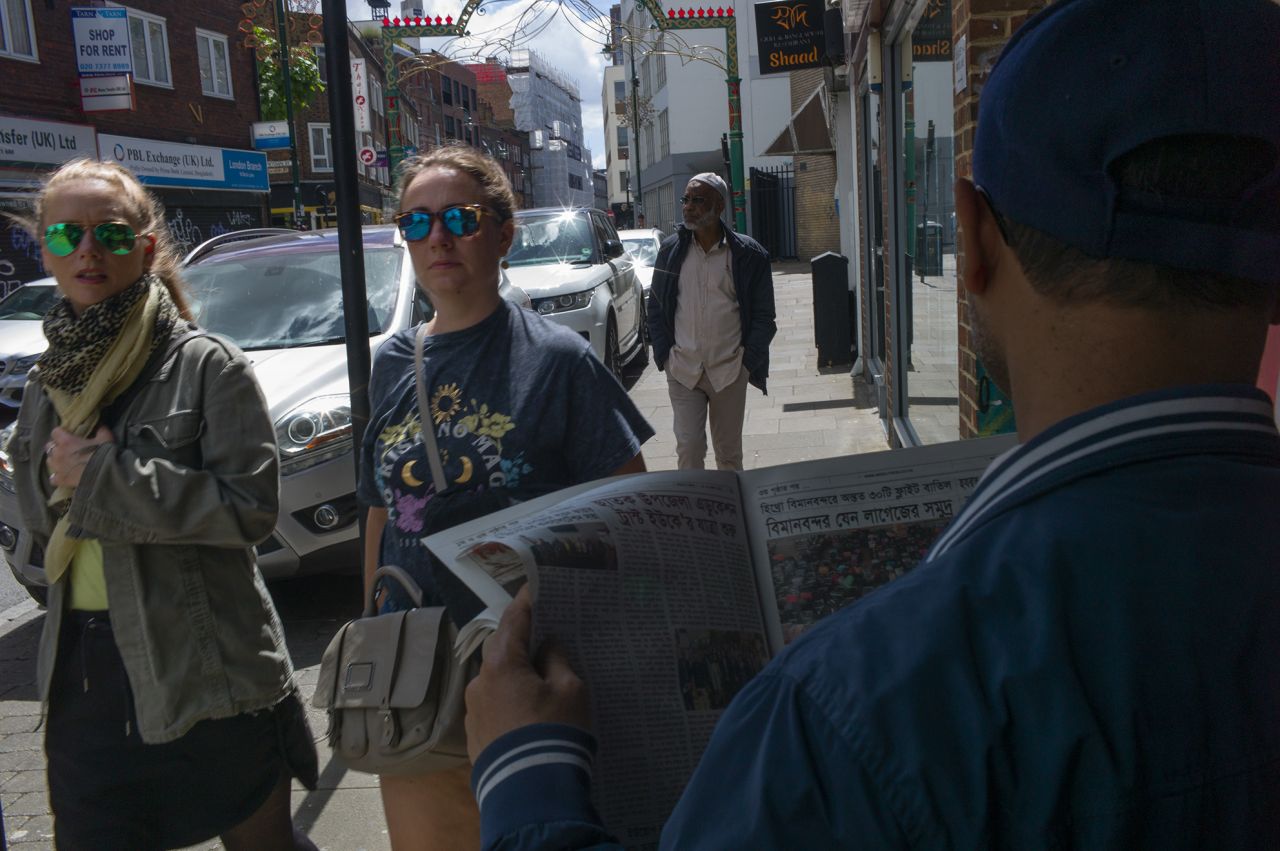
© Simon Wheatley
Each year, Photography News puts on a unique photography challenge that takes place in London. Sponsored by MPB, the online platform for used photography and videography equipment, Photo 24 sends participants out on a series of themed challenges.
To add to the excitement, they also challenge a celebrity photographer to shoot in the capital for the entire 24 hours. This year, we were especially excited, as they picked one of our favourite creatives for the assignment.
Simon Wheatley is a London-based photographer and film-maker best known for chronicling London's grime culture. His 2010 book 'Don't Call Me Urban: The Time of Grime' is a classic of British documentary photography, and he's currently preparing an updated version, bringing things up to the present day.
Other career highlights for Simon have included working as a Magnum photographer in Paris, producing ground-breaking work from the French suburbs after the 2005 riots, and being chosen as the worldwide ambassador for Leica's M-series camera in 2006. Since 2018 he's been the in-house photographer at London's Abbey Road Studios.
Over the past decade, Simon has divided his time between London and India, the land of his maternal ancestry. He conducts workshops across the world and is developing a course of photography that seeks to combine physical, mental and spiritual development.
We chatted to Simon to hear how he responded to the Photo 24 challenge, what he learned from the experience and the kit he used to get through his mammoth shoot.
How did you approach the idea of shooting for 24 hours non-stop?
Actually, I didn't want to shoot 24 hours non-stop because there'd have been no way I'd have produced good work doing that. So the way I interpreted the brief was that I had 24 hours to fulfil the assignment. And I would take as much of that time as was necessary.
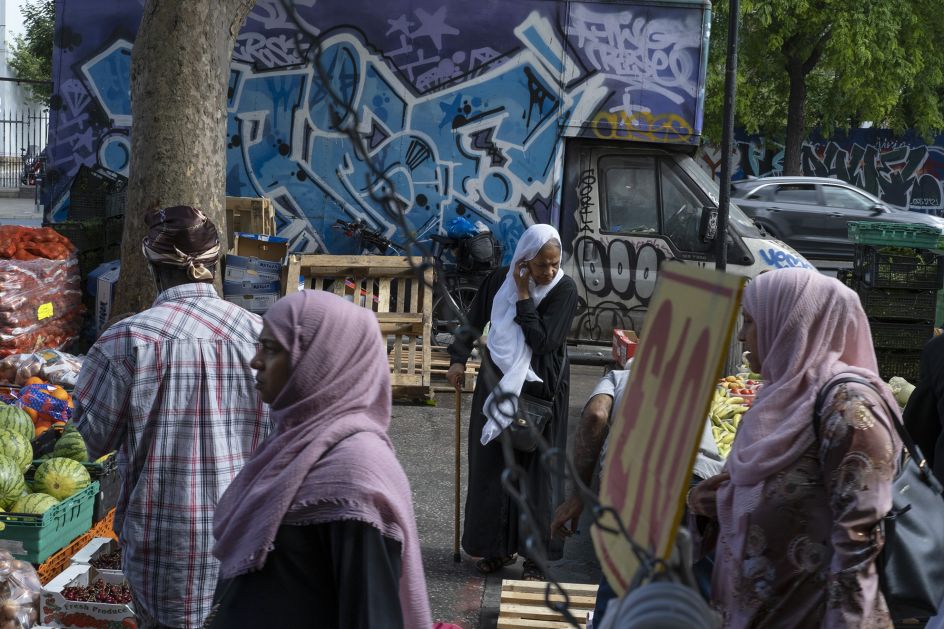
© Simon Wheatley
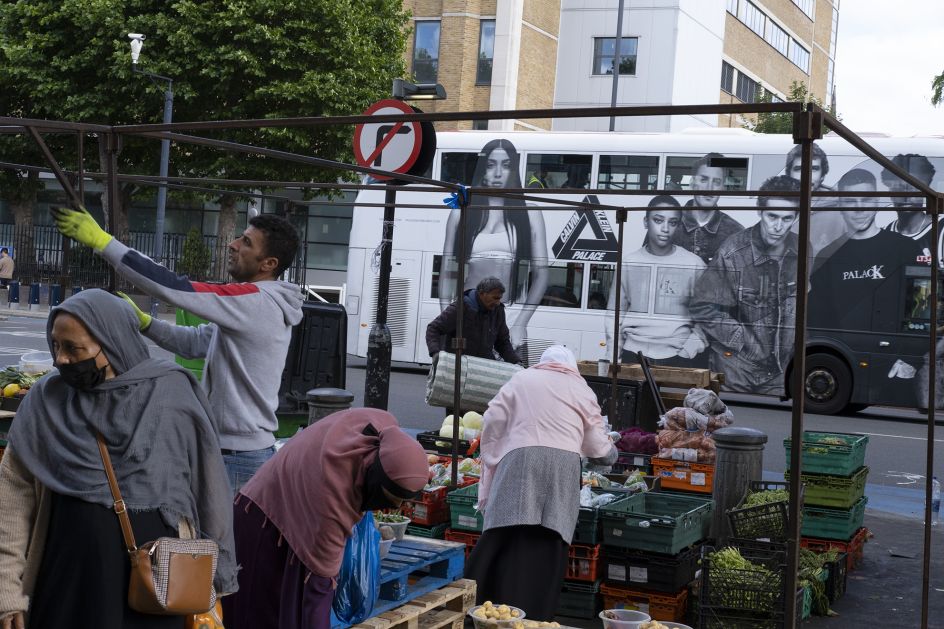
© Simon Wheatley
What kit did you take?
I normally use a Leica M9 Rangefinder, but for this project, MPB also gave me a Fuji X Pro 3, which I really liked. It was very smooth and easy to use.
This camera is a good choice for street photography because it's small, and while it's got a hidden rear LCD, it's very much about using the viewfinder. That's precisely the way I like to shoot. The viewfinder is to the left of the camera, not in the middle, like on an SLR. So I can look through my right eye, and the left side is very much free to see the scene.
With an SLR, what you see in the viewfinder is what you get on your image; you don't see anything around the edges. But with the X Pro 3, like on my M9, you have a box which you put onto the image. And you can see what's coming in and out of it. So I find that approach much better for the anticipation of an image.
MPB gave me a 50mm lens with the X Pro 3, which is good when exploring the streets. But once I find a subject, I want to get in there and get busy. At this point, I need a wider angle lens to get in close. So for that, I used the 35mm lens on my M9.
Taking both cameras wasn't a problem because they're both lightweight: the XT-3 is less than half a kilo. And I don't carry a tripod or anything else like that. So I carried both cameras in a bag. You wouldn't even know I was a photographer!
Of course, there's also the option of using my phone. The iPhone is so good now. You sometimes think: why carry a camera out anymore? But I feel a bit more serious when I've got a camera in my hand. It means I'm in the right mindset to get the desired result. Whereas if I just had a phone camera, I wouldn't really feel like I was engaging in anything revelatory.
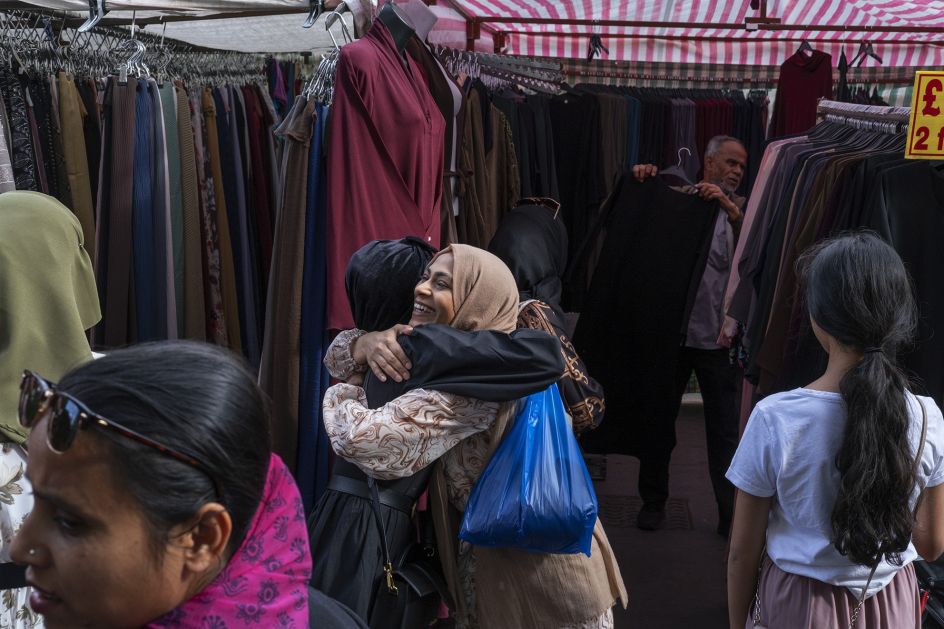
© Simon Wheatley
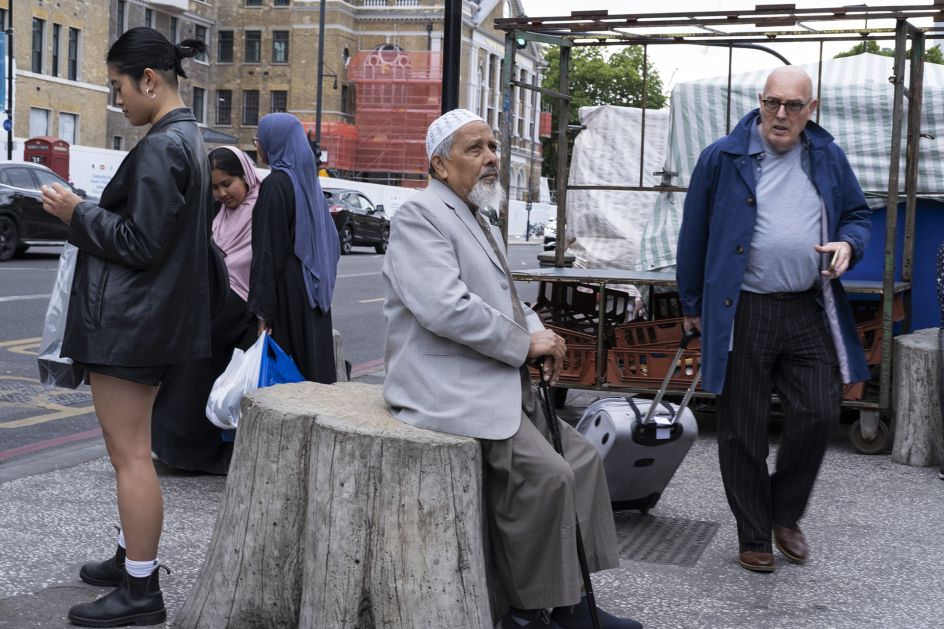
© Simon Wheatley
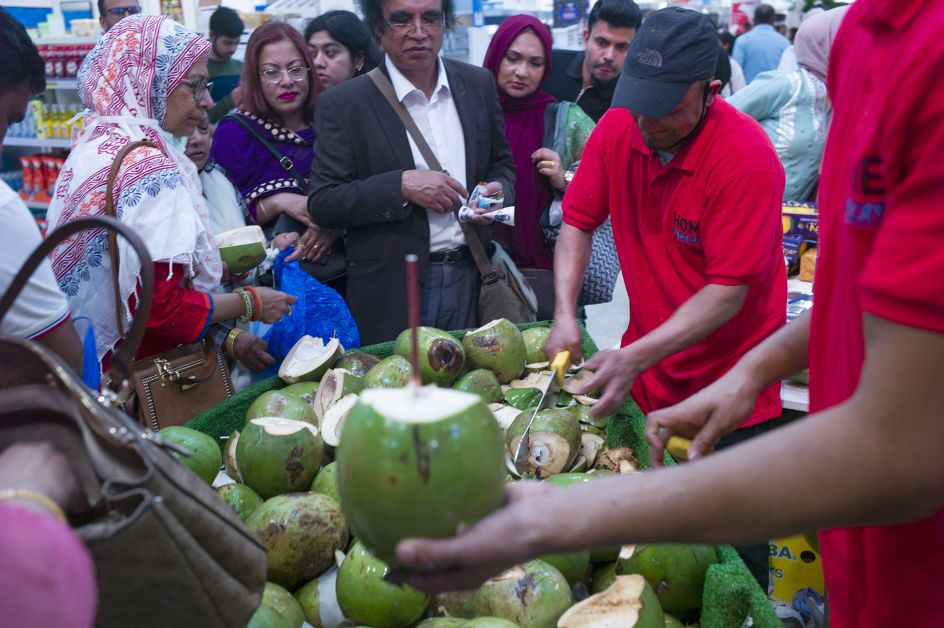
© Simon Wheatley
How did you plan to use the 24 hours?
The talk that began the Photo 24 event was at Piccadilly in central London. So my original plan was to keep it simple and photograph in that area: the nightlife, the cafes, the bars. However, it was a little tedious when I walked around a bit after the talk. I didn't feel I'd be making anything unique and special.
So I changed my strategy. I thought: 'Right, I'm gonna go and photograph East London'. Because this is where – finally, at this stage in my life – I've come to feel at home. So I thought: 'Let me go and celebrate that and photograph an interesting part of town.'
I headed to Broadway market in Hackney… but it was so dull. Some people were prancing around by the vintage clothes, checking themselves in their mirrors, and I tried to take some pictures there. But it really wasn't at all inspiring.
Sounds frustrating! So what happened next?
I left Hackney and went to Whitechapel Market. That's where – when I came back to London in 2003 – I began photographing the Bangladeshi community and also came across my first picture of grime. So my interest in the area goes back a long way.
I figured that this assignment could be an opportunity for me to rekindle that initial foray into East London that I made 20 years ago. Because I want to focus on something: just wandering around and taking pictures can be a bit vapid.
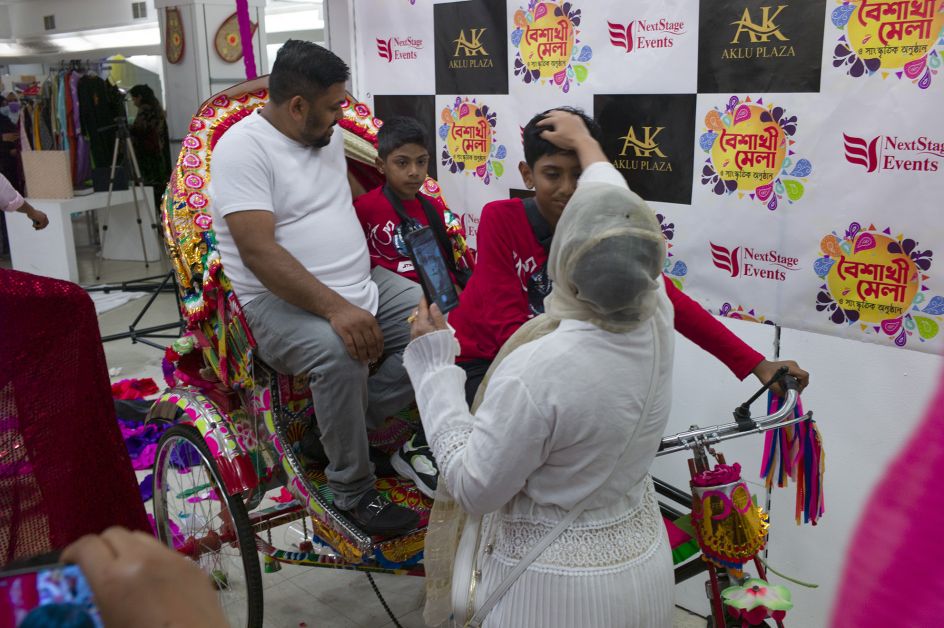
© Simon Wheatley
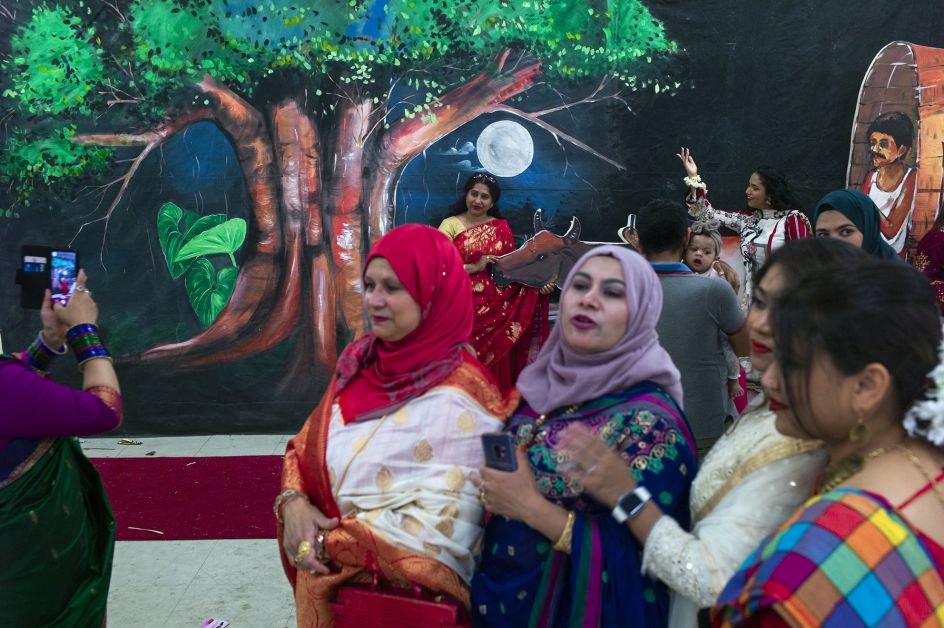
© Simon Wheatley
You need some kind of theme, or reason, to be in a particular area.
Yes, that's what I've always thrived on. I remember being in Budapest, Hungary, in the mid-90s. There was so much confusion in society caused by the sudden shift in economic models between communism and capitalism and the polarisation that occurred as a result. So it was a fascinating place to begin photography for me. Also, when I went to India around 2008-2010, it was interesting to see the tensions between globalisation and traditional Indian life in Kolkata. But to just wander around somewhere without any overarching thematic interest, it's difficult to take pictures. Because ultimately, I'm a storyteller.
What do you do when those storytelling moments don't present themselves?
As I tell my workshop students, you've got to hang in there, even if it's difficult. You don't win every game five-nil. Sometimes it's a messy game, and you only win in the last minute, but it's still a win. And it's the same in photography. You have to keep going, and you have to get your result. You don't give up. And that's why I just hung in there. But it was really difficult because you've got streets that are massively busy. People are running in and out of your camera.
One minute the sun's there, then suddenly the cloud's coming over, making a difference to exposure. It's taking the highlight away from a picture that needs it because, ultimately, it's light that creates the drama in photography.
When did things start to turn around?
In Whitechapel, I got tipped off about a Mela [an Indian festival or fair] on the outskirts of London, which was being held in a shopping mall. So I made my way over there. The scene that greeted me was completely surreal.
A Bangladeshi guy has taken over this old department store. It's a bit like Selfridges, where you've got sections with different designers through the store – say, a Tommy Hilfiger section or a Gap section – only it's all Bangladeshi. I walked in, and it looked like Kolkata. People were selling coconuts and hacking them open with a knife. There were all kinds of people queuing for them. It was mayhem. It was wonderful!
I went upstairs, and there was a model rickshaw. It was very sweet because the mothers were photographing their children on there. And you felt a real sense of affection for the homeland because a lot of people there were quite recent arrivals from Bangladesh. At the same time, it was very tacky, which made for some interesting images.
Afterwards, I returned to East London and spotted some people I knew. They're young, positive youths, around 30. So I went to hang out with them. One guy's really into his vintage BMW cars, so I made a couple of pictures of them hanging out in the garage. Afterwards, they took me to some bars. These illegal bars in East London are private entry only, and you can't photograph there. Because sometimes they're fronts for bigger things.
After that, I decided to call it a night because I'd found my path for the assignment. Earlier, I'd been thinking about going to Hackney Wick and finding an all-nighter, some squat party. So I'd made some calls earlier in the day to learn what was happening. But it was also Glastonbury that weekend, so many of the people I knew were away. So I figured it was better to go home, get a few hours' sleep, and then get up at dawn.
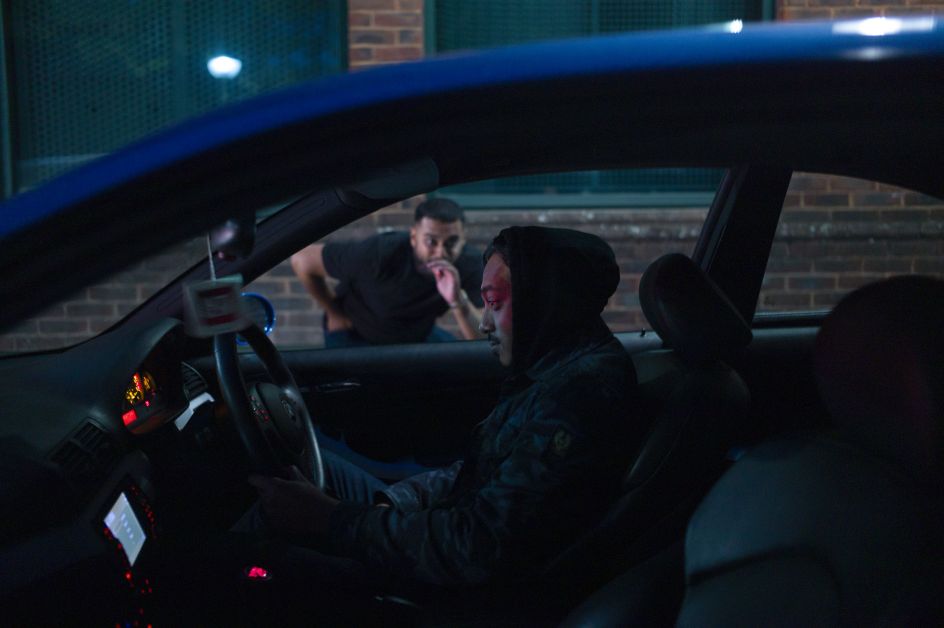
© Simon Wheatley
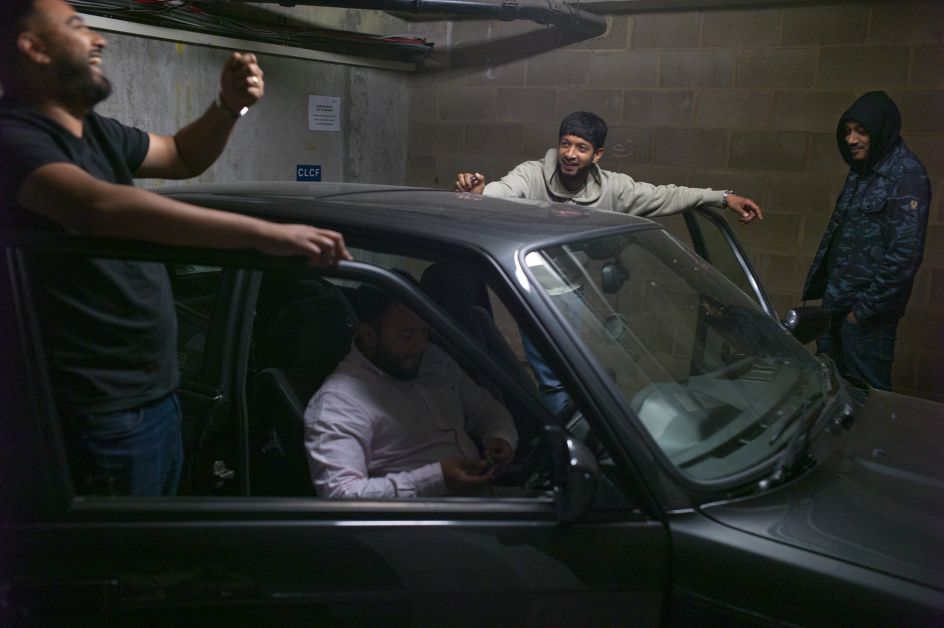
© Simon Wheatley
Where did you head then?
I shot at dawn, just after 6am, on estates around the edge of Brick Lane. But there was no one around at that time, so I ended up making some architectural pictures. I've always been very fascinated by the architecture of the 70s; that's how I came across grime music too. Because I was photographing an estate in south London, just getting to know people there, and music was the local language for the young people.
Finally, I went back for one intense last hour, trying to photograph on Brick Lane. It wasn't easy, but I got results. Since then, I've been editing my pictures and have a portfolio to share that I'm happy with.
You haven't done street photography in about a decade. Has anything changed?
In terms of people's reactions, not really. It's always been difficult; even 10-20 years ago, there was resistance. So I wouldn't say that's changed so much.
In terms of myself, though, there's been a big change. When I was in China and India, I learned a lot about Taoism and the concept of the path of least resistance. Since then, I've found myself photographing differently.
There was a time this weekend, for example, when two Bangladeshi women were on the bench, and they didn't want to be photographed. So I just sat down next to them and spoke to them. Not getting the picture didn't matter because the journey is always the destination.
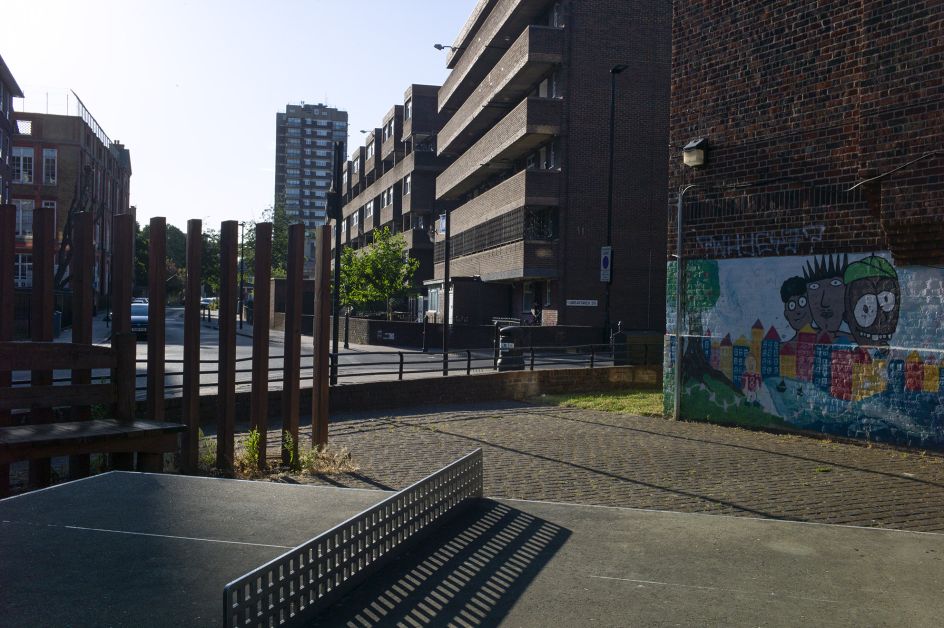
© Simon Wheatley
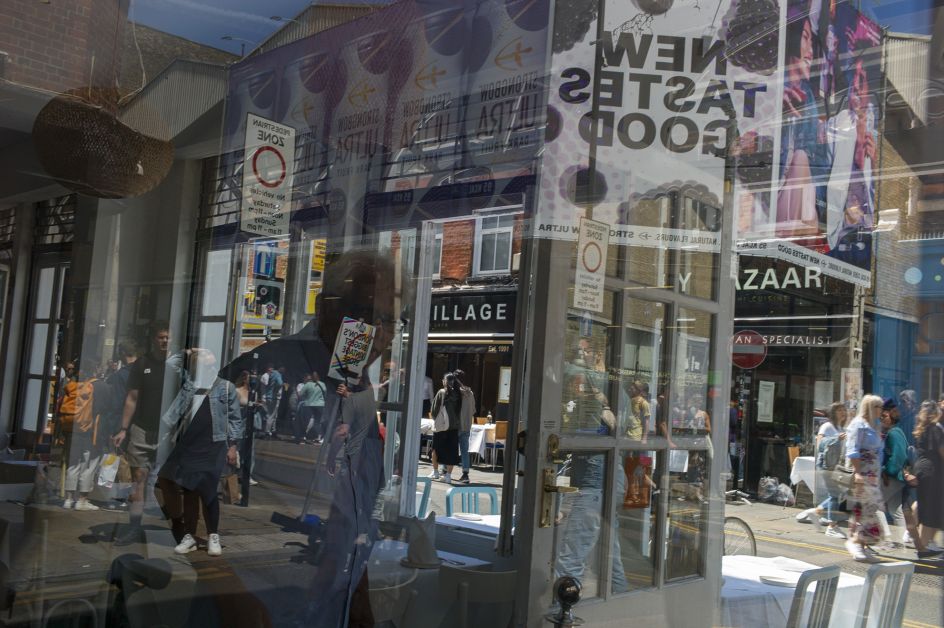
© Simon Wheatley
I've learned that if I come across somebody who doesn't want to be photographed, but they're not outwardly hostile, I'll use that moment to pause this day. Sit down next to them and just talk. Because they might not want to be photographed, but you can still talk with them. And they can be interesting people.
As it was, whilst sitting down and looking in the other direction, I found another picture: this guy sitting on a tree stump on the main road. So just by sitting with this lady, I could then explore that situation while I was talking.
To me, photography is about putting yourself in a zone where your pictures can happen. I believe that photographs come to us. It's not about making photographs. It's about taking photographs. They're moments that are given to us. So it's about putting yourself in a zone where you can receive those moments.





 by Tüpokompanii](https://www.creativeboom.com/upload/articles/58/58684538770fb5b428dc1882f7a732f153500153_732.jpg)

 using <a href="https://www.ohnotype.co/fonts/obviously" target="_blank">Obviously</a> by Oh No Type Co., Art Director, Brand & Creative—Spotify](https://www.creativeboom.com/upload/articles/6e/6ed31eddc26fa563f213fc76d6993dab9231ffe4_732.jpg)








